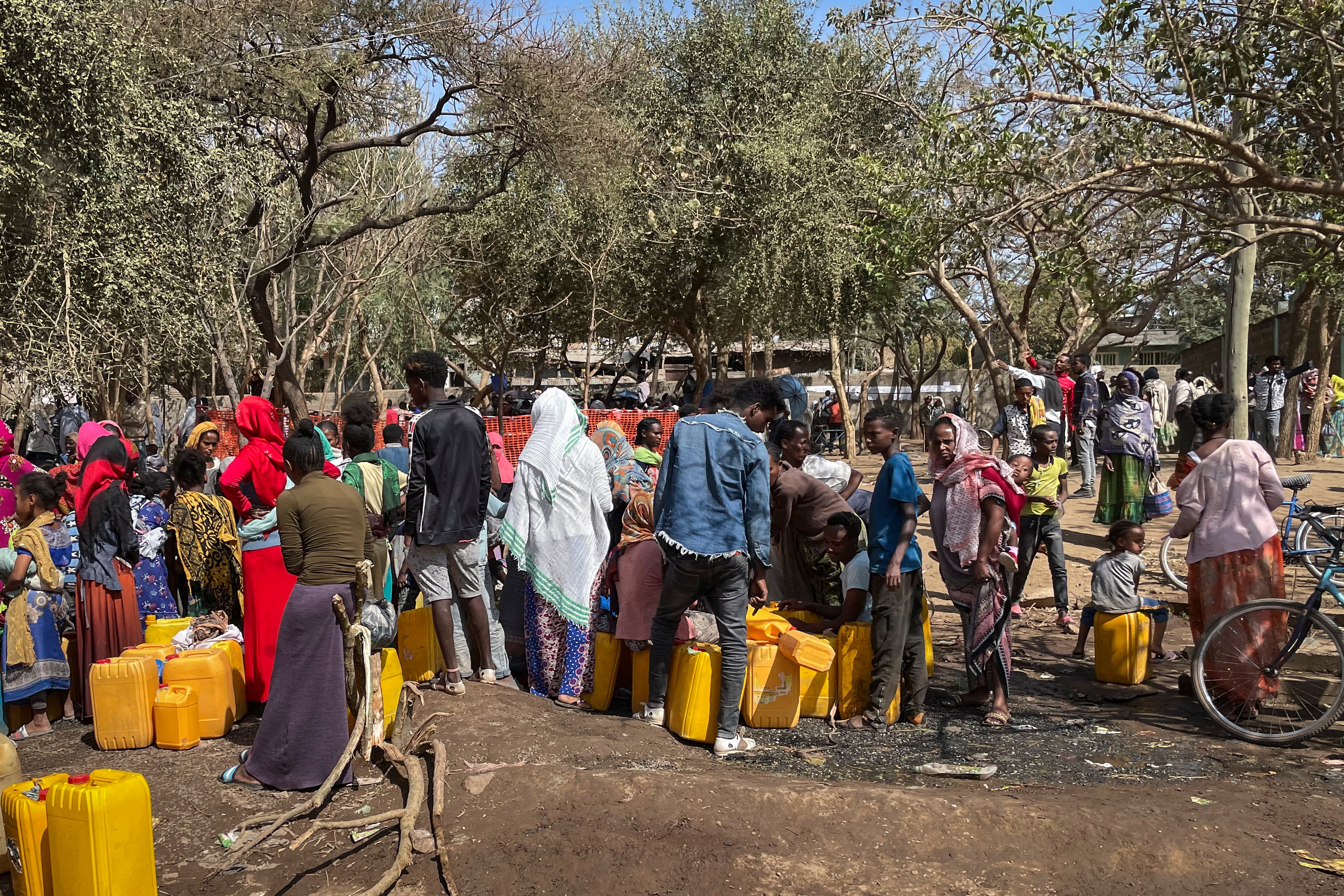'People are starving': New exodus in Ethiopia's Tigray area
Skinny, hungry, fleeing threats of violence, thousands of people who have been hiding in rural areas of Ethiopia’s Tigray region have begun arriving in a community that can barely support them — and more are said to be on the way

Your support helps us to tell the story
From reproductive rights to climate change to Big Tech, The Independent is on the ground when the story is developing. Whether it's investigating the financials of Elon Musk's pro-Trump PAC or producing our latest documentary, 'The A Word', which shines a light on the American women fighting for reproductive rights, we know how important it is to parse out the facts from the messaging.
At such a critical moment in US history, we need reporters on the ground. Your donation allows us to keep sending journalists to speak to both sides of the story.
The Independent is trusted by Americans across the entire political spectrum. And unlike many other quality news outlets, we choose not to lock Americans out of our reporting and analysis with paywalls. We believe quality journalism should be available to everyone, paid for by those who can afford it.
Your support makes all the difference.Skinny, hungry, fleeing threats of violence, thousands of people who have been hiding in rural areas of Ethiopia’s Tigray region have begun arriving in a community that can barely support them — and more are said to be on the way.
For months, one great unknown in the Tigray conflict has been the fate of hundreds of thousands of people in vast rural areas beyond the reach of outside aid. With the region largely cut off from the world since November, fears of violence and starvation have grown.
Now those people are starting to arrive, many by foot, in the community of Shire aid workers who are there and who have visited say. The Associated Press obtained permission to use rare photos largely from the International Rescue Committee of the dire conditions facing these displaced people. Photos from the region have been hard to come by, with electricity cut for much of the conflict and ethnic Tigrayans telling the AP that being caught with photos endangered their lives.
Some 5,000 people had arrived between last Wednesday and Sunday, and humanitarian teams are being sent to find those said to be on the way, Oliver Behn, general director for Doctors Without Borders-Holland, told the AP.
“They are coming in very bad conditions … very exhausted, dehydrated, skinny,” Behn said after a visit. “It’s becoming a desperate situation very quickly.”
The people arriving bring an idea of the deprivation gnawing at the Tigray countryside. Aid workers say some describe surviving by eating leaves — or the seeds they had put aside for planting, in a sign of even worse hunger to come.
It is not clear exactly what new threats of violence caused these thousands of people to flee western Tigray, where U.S. Secretary of State Antony Blinken on Wednesday said “acts of ethnic cleansing” have been seen. Some people from Ethiopia’s neighboring Amhara region are accused of occupying communities. In speaking with humanitarian workers, the ethnic Tigrayans described hiding in the hills for weeks after the fighting erupted between Ethiopian and allied forces and those of the Tigray regional leaders who once dominated the country’s government but were sidelined under Prime Minister Abiy Ahmed.
Shire is a base of operations for humanitarian efforts that workers say are not enough to meet the growing needs. Some 16,000 displaced people already occupy three crowded camps set up in schools, including unfinished buildings with perilous drop-offs and empty elevator shafts. Some people sleep 40 or 50 to a room, possessing little but mats and clothes.
There is no space in these camps for the thousands of new arrivals. Hundreds are now sleeping outdoors.
Communities across Tigray have been in little condition to support even their own residents. The conflict erupted on the brink of harvest, and after months of a locust outbreak. Banks were closed, and stores were looted. Even now, as Ethiopia’s government asserts that it has reached over 4 million people with food aid, it is not enough.
“People are starving,” Madiha Raza with the International Rescue Committee told the AP after visiting Shire recently. “There is a severe issue of access to food. One interviewee told me she survived on just leaves for a month while she hid in a forest. There have been some food distributions at the internally displaced people centers but not nearly sufficient amounts.”
The United States estimates that 4 million people, or two-thirds of Tigray’s population, urgently need food aid. Even as access slowly improves to the region, worries grow.
“What we know is extremely concerning, but what we don’t know might be even worse,” said Manuel Fontaine, director of emergency programs with UNICEF.
The newly arriving people from rural areas are a constant reminder of how grim life might be for those still hiding from the conflict.
“Our teams have seen people arriving in main towns, (internally displaced people’s) sites that are in extremely bad shape,” Dominik Stillhart, director of operations with the International Committee of the Red Cross, told reporters late last month.
Some Tigray communities remain out of reach. Only in recent weeks have Doctors Without Borders workers begun arriving in places that had been inaccessible.
Health centers have been looted and few health workers remain, Behn said, meaning that people have had little or no help for childbirths and other emergencies or even basic care.
“It’s very clear these communities are in significant need,” he said. “Coping mechanisms after four months are really at the edge.”